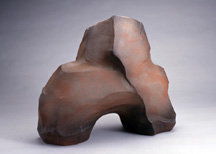Contemporary Japanese Pottery
dal 19/2/2008 al 29/3/2008
Segnalato da
19/2/2008
Contemporary Japanese Pottery
University Museum and Art Gallery - UMAG, Hong Kong
The show presents an overview of traditional Japanese pottery today. The exhibition features 70 ceramics by 35 notable contemporary artists whose works combine traditional techniques with individual creativity. Most of the exhibits are vessels illustrating a harmony between function and aesthetics.

This show is jointly presented by the Consulate-General of Japan, The Japan Foundation, and the University Museum and Art Gallery of The University of Hong Kong. It presents an overview of traditional Japanese pottery today. The exhibition features 70 ceramics by 35 notable contemporary artists whose works combine traditional techniques with individual creativity. Most of the exhibits are vessels illustrating a harmony between function and aesthetics.
Japanese pottery is distinguished locally by the source of the clay, and kiln techniques. In particular the areas to the south of the Kanto region, which are abundant in porcelain clay and wood for fuel, supporting a thriving pottery industry there to this day. Among the exhibits the longest tradition is represented by Bizen ware, made of iron-rich clay. This austere unglazed ware has been an important component of the tea ceremony since the 16th century. Benefitting from advances in technology, Oribe ware which originated in the Seto and Mino areas, now incorporates non-local materials and European techniques. Kyoto has maintained its position as the nation's cultural centre, producing various types of traditional pottery such as iro-e, sometsuke or raku wares. In the capital Tokyo, a combination of art schools, and access to information has attracted many innovative ceramic artists.
Tracing the history of Japanese pottery reveals also how it has been influenced by other cultures. Arita is regarded as the origin of porcelain making in Japan, when a naturalized Korean potter discovered porcelain clay in the early 17th century. The porcelain techniques in Korea in fact were adopted from China in the early Koryo dynasty (918-1392). The Arita kilns later developed underglaze-blue and polychrome overglaze enamel techniques, which were exported as Imari and Kakiemon porcelains in the mid-17th century.
In Japanese culture the decorative arts enjoy a status similar to that of the fine arts. The process of pottery making in Japan is considered to be undertaken by an individual artist not an artisan. Traditional Japanese pottery flourishes today because of the unique culture of appreciation of pottery that exists only in Japan.
University Museum and Art Gallery - UMAG
94 Bonham Road, Pokfulam (University of Hong Kong) - Hong Kong
Opening hours: Monday to Saturday 9:30 am to 6:00 pm;
Sundays 1:30 to 5:30 pm. Closed University and public holidays.
Admission is free



